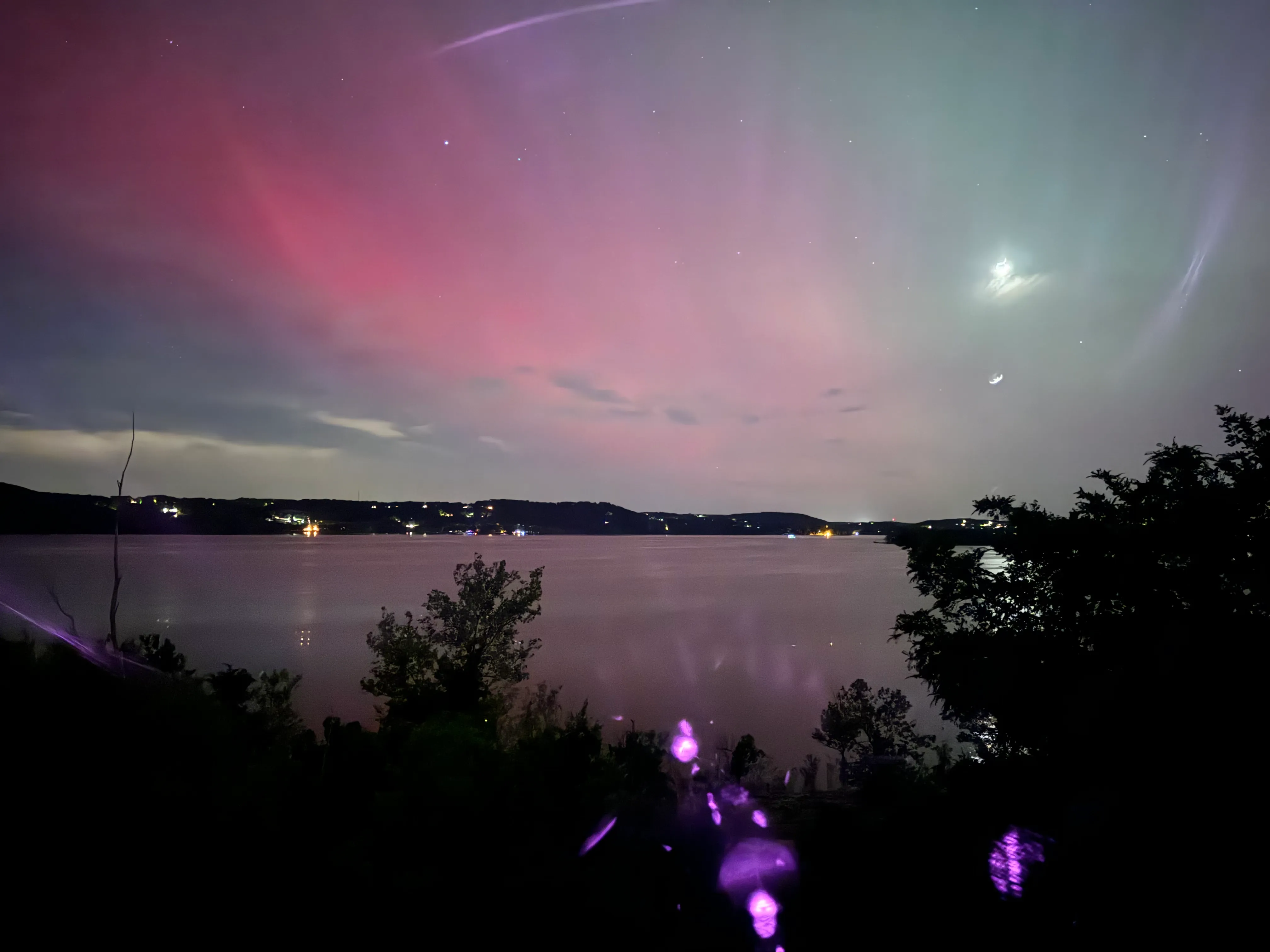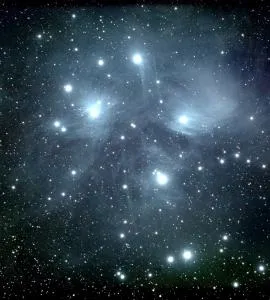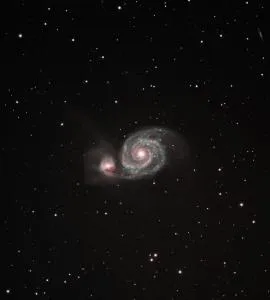NGC 1433 Barred Spiral Galaxy in Horologium astrophoto with CDK24

Witness the beauty and mystery of NGC 1433 through an astrophoto taken with the CDK24 inch telescope in Chile by the Ozark Hills Observatory.
NGC 1433 is a barred spiral galaxy located in the constellation Horologium, which is a relatively faint and small constellation in the southern celestial hemisphere. This galaxy is situated about 32 million light-years away from Earth and is part of the Fornax Cluster, a group of galaxies gravitationally bound together. This astrophoto represents the deepest space object I have captured to date. It has an apparent magnitude that generally falls within the range of about 10 to 11 and is a Seyfert galaxy — a classification that accounts for 10% of all galaxies. It was perfect to aim the 24" PlaneWave telescope towards - especially because we would not get the chance otherwise here in Missouri.
NGC 1433 is notable for its distinct bar-shaped structure in its central region, which is a common feature in many spiral galaxies. The bar is a long, elongated structure of stars, gas, and dust that runs through the center of the galaxy. It plays a significant role in the dynamics of the galaxy, influencing the movement of stars and gas within it.
This galaxy has been the subject of scientific study and observation to better understand the processes of star formation and the dynamics of barred spiral galaxies. Its location in the Fornax Cluster makes it an interesting object for astronomers studying the properties and behavior of galaxies within galaxy clusters. It's total splender can be seen in this LEGUS photo of NGC 1433 taken from the Hubble Space Telescope, and also by the James Webb Space Telescope here.
How big is NGC 1433 galaxy?
NGC 1433 is a moderately sized barred spiral galaxy. Its physical size is typically measured in terms of its diameter, which can vary depending on how it is defined (e.g., the size of its visible disk or the extent of its outer regions). Spiral galaxies like NGC 1433 can range in size from tens of thousands to over a hundred thousand light-years in diameter.
For NGC 1433 specifically, its diameter is estimated to be around 70,000 to 80,000 light-years across. Keep in mind that these measurements can have some degree of uncertainty, but this range provides a general idea of the galaxy's size. It's important to note that the size of a galaxy can be difficult to determine precisely due to the complex and extended nature of its outer regions, including its spiral arms, which can extend far beyond its central core. ALMA observations here.
The Andromeda Galaxy, also known as Messier 31 (M31), is significantly larger than NGC 1433 and has an apparent magnitude of around 3.4. It is one of the closest spiral galaxies to our Milky Way and is approximately 220,000 to 260,000 light-years in diameter. This makes it much larger than NGC 1433 and our own Milky Way galaxy.


What makes NGC 1433 intresting?
1. Barred Spiral Structure: NGC 1433 is a barred spiral galaxy, which means it has a central bar-shaped structure composed of stars, gas, and dust. The presence of a bar can significantly influence the dynamics and star formation within a galaxy, making it an intriguing object for studying galactic structure and evolution.
2. Active Galactic Nucleus (AGN): NGC 1433 hosts an active galactic nucleus, or AGN, at its center. AGNs are powered by the accretion of material onto a supermassive black hole, and they emit intense radiation across the electromagnetic spectrum. The study of AGNs can provide insights into the behavior of these massive black holes and their impact on their host galaxies.
3. Star Formation: NGC 1433 exhibits regions of active star formation, particularly in its spiral arms. These areas of intense starbirth are often associated with young, massive stars, and studying them can help scientists understand the processes that drive star formation in galaxies.
4. Location in the Fornax Cluster: NGC 1433 is part of the Fornax Cluster, a galaxy cluster relatively close to our Milky Way. Its location in this cluster provides opportunities to study interactions between galaxies in a denser cosmic environment.
5. Observational Studies: Astronomers have used various telescopes and instruments to observe NGC 1433 across different wavelengths, from radio waves to X-rays. These observations have yielded valuable data on the galaxy's structure, star formation, and the nature of its active nucleus.
6. Contribution to Galaxy Evolution Studies: The study of galaxies like NGC 1433 contributes to our understanding of galaxy evolution, the role of bars in galaxy dynamics, and the interplay between supermassive black holes and their host galaxies.
Overall, NGC 1433 is interesting to astronomers because it offers a glimpse into the complex processes at work within galaxies, the interactions between different components (such as the bar and spiral arms), and the impact of an active galactic nucleus on the surrounding environment. It serves as a fascinating subject for scientific research and observations.

Ozarks Explaination: What exactly am I looking at here when you say NGC 1433 barred spiral galaxy?
Imagine NGC 1433 as somethin' like a bright, sparklin' speck up there in the night sky, like a distant firefly on a clear summer night. Now, it ain't a firefly; it's a big bunch of stars, gas, and dust way out in space. You see, this here space thing is called a "galaxy," and it's a bit like a cosmic family of stars all hangin' out together.
Now, NGC 1433 ain't just any old galaxy; it's got a special twist to it. Right at its center, it's got somethin' called a "bar," like the wooden bar on the door of your barn, but made of stars instead. This bar thing makes it kinda different from other galaxies.
And inside NGC 1433, there's a real energetic spot, like a wild raccoon stirrin' up trouble. This spot is what they call an "active galactic nucleus" or AGN for short. It's like the fiery heart of the galaxy, where stuff is gettin' pulled into a big ol' black hole. This black hole is so powerful it shoots out lots of energy, like fireworks on the Fourth of July.
But that ain't all, partner! NGC 1433 is also home to some brand-new baby stars, like those cute little critters born in the spring. They're born right in the spiral arms of the galaxy, where it's like a celestial nursery.
So, in a nutshell, NGC 1433 is like a big family of stars and wild things happenin' at its center. It's a bit like watchin' the night sky, but with a whole lot more going on up there in the great cosmic frontier!
NGC 1433 astrophoto details
Telescope: PlaneWave CDK 24”
Mount: L600 Direct Drive mount
Camera: C3-61000 Pro
Guider: ZWO ASI 174mm mini as the guide camera, off axis guided
Controller: NINA
Acquisition:
16 - 900s of LRGB each
30 - 900s -Ha
23.5 hours total time
Darks/Flats/Bias: (None)
Luminance: (None)
Processing: Pixinsight, Photoshop
Location: Chile
Bortle: 1
About the Author

Meet Richard Harris, a passionate and dedicated astronomer who embarked on a cosmic journey at the age of 11 and has been reaching for the stars ever since. Born with an innate curiosity for the universe. Richard's fascination with astronomy ignited when he first gazed up at the night sky and felt an indescribable connection to the cosmos and creation. As a younger lad, Richard spent countless hours poring over astronomy books, studying constellations, and learning about the celestial wonders that grace our skies. In 2001, Richard invented the HyperTune telescope process, which has grown into the standard for German equatorial telescope mount tuning across the globe. He is also the founder of ScopeTrader, a global resource helping to grow the hobby of astronomy which started in 2002, and the CEO of Moonbeam software company, started in 2008. When he's not taking photos of our universe, you can find him with family, playing guitar, or traveling.











